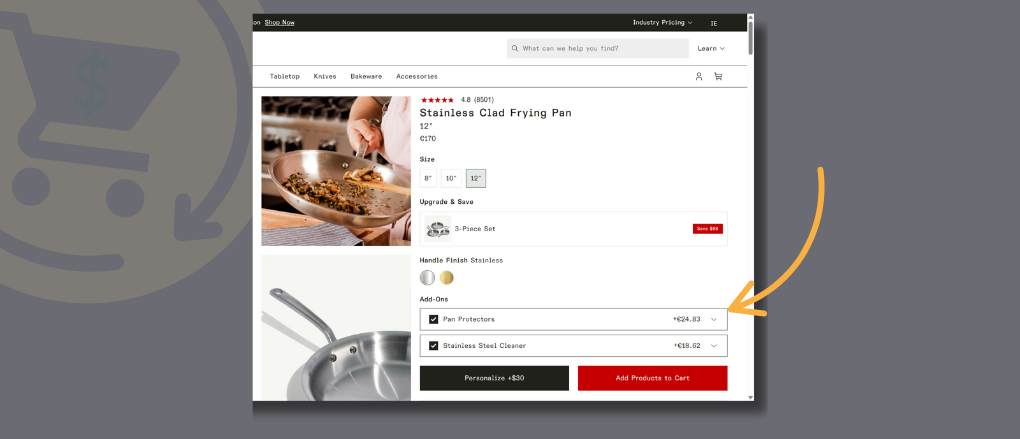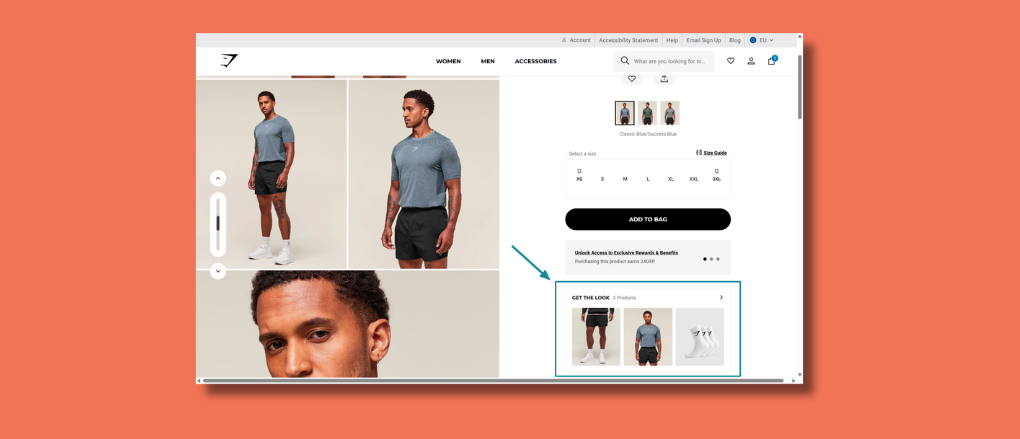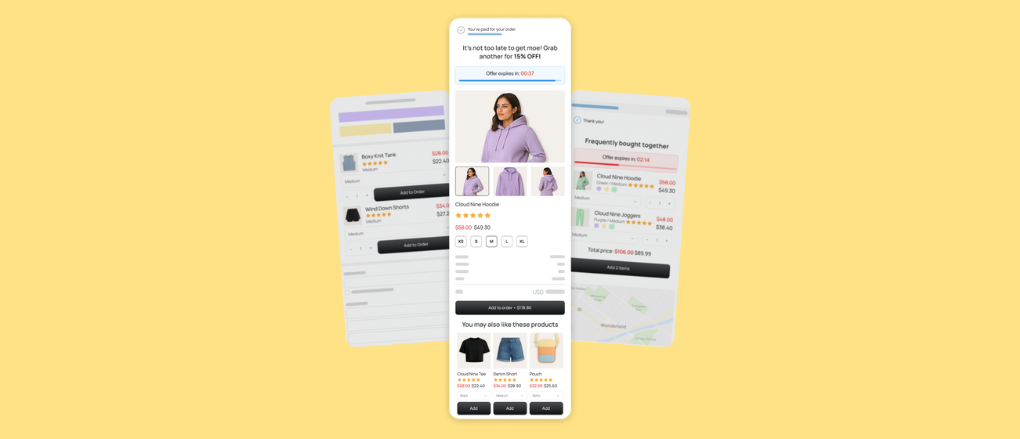Featured Products: What Are They & How to Use Them on Shopify
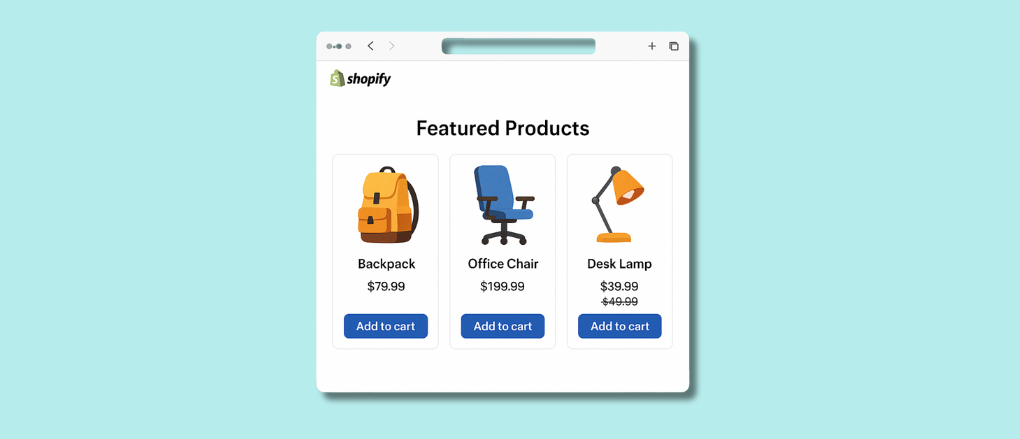
Imagine this: You’re an e-commerce store owner with a new handcrafted candle business online. People are visiting your site and admiring your offerings. But they’re not making any purchases. You highlight your signature “Midnight Jasmine” as your featured product. Then, you notice that browsers become buyers, and your average order value increases.
How exactly does this happen?
In this article, we’ll explore the use of featured products in more detail. We also discuss how to use the right strategies to increase sales and gain more loyal customers.
What is a Featured Product?
A featured product is an item that you intentionally spotlight across your e-commerce store to drive more attention, clicks, and conversions. It’s the product you put front and center because it best represents your brand, has high sales potential, or aligns with a current promotion or season.
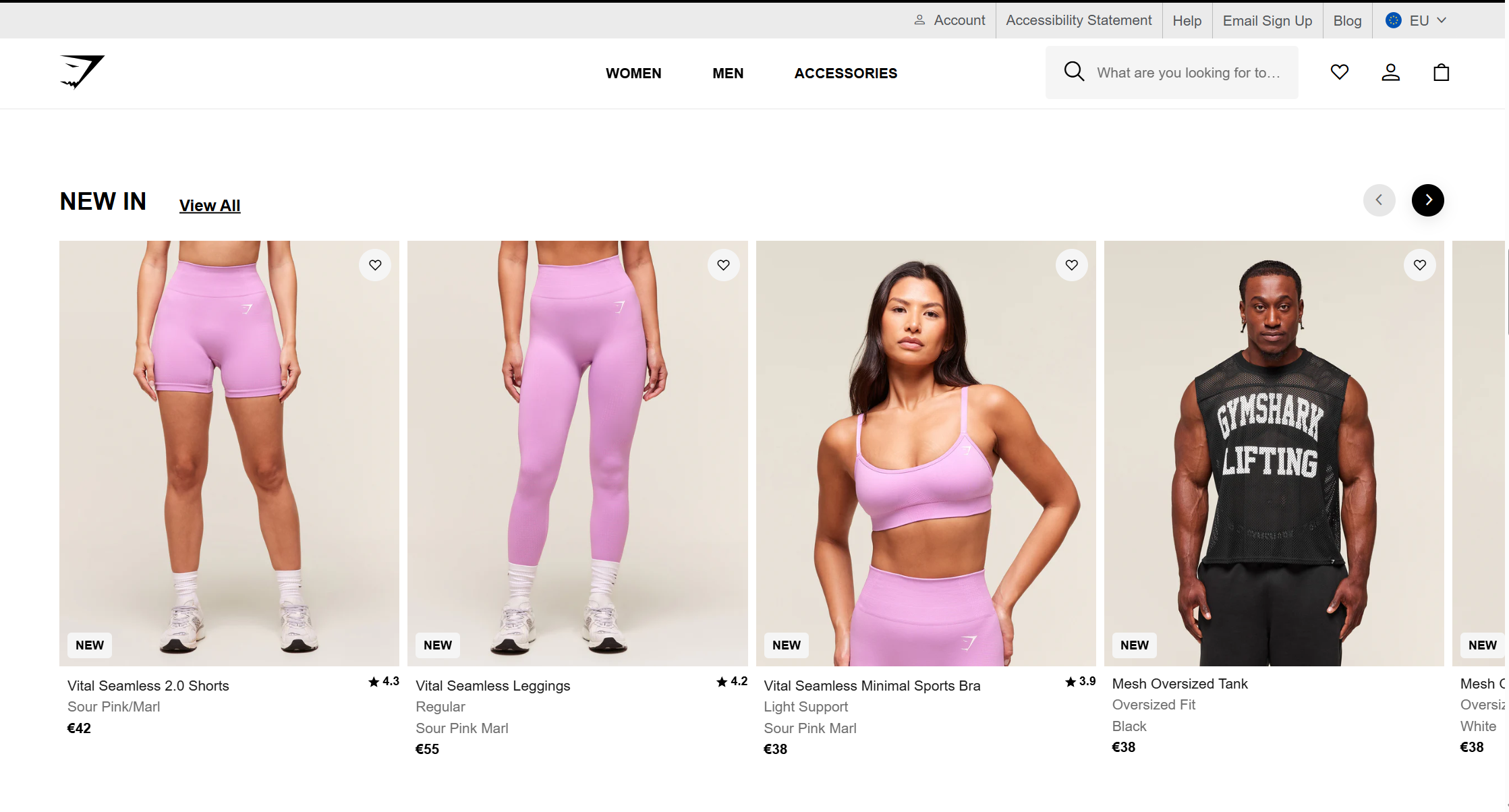
Think of it as your store’s “hero” item. Just like a shop window highlights one or two standout products to lure customers inside, your featured product is a virtual magnet that pulls browsers deeper into your site.
It’s not just about visibility - it’s about intent.
When you choose a product to feature, you're sending a message to your customers: This item is popular, valuable, and worth checking out. Whether it’s your best-seller, a new arrival, or a limited-time deal, a featured product helps you guide customer focus strategically.
Where does a featured product appear?
- At the top of your homepage in a hero banner
- Within a category page marked as “Editor’s Pick” or “Bestseller”
- Inside a product page sidebar or cross-sell section
- Highlighted in emails, pop-ups, or dynamic recommendation blocks
Why does this matter?
Customers often suffer from “choice overload.” By spotlighting a featured product, you reduce friction in their decision-making process. It gives them a starting point, a sense of direction, and often, the confidence to make a purchase.
In short, a featured product isn’t just a random pick. It’s a smart marketing lever that influences shopping behavior, improves user experience, and increases the odds of a sale.
The Psychology Behind “Featured Product” Placement
Your online store is like a busy marketplace. It's where products that catch the most attention are the ones that your store features. You see, shoppers follow specific patterns in how they view a page. And what they pay attention to first.
With these natural tendencies, you can steer customers toward your best-selling items. You don't need to bombard your audience with sales pitches.
Let's say you place a featured product in the spots where visitors’ eyes land. This could be at the top left of your homepage or below a catchy banner. This way, you’re working with the customer behavior.
When you place a featured product in the spots where visitors’ eyes naturally land, like the top left of your homepage or right under a catchy banner, you’re working with the customer behavior.
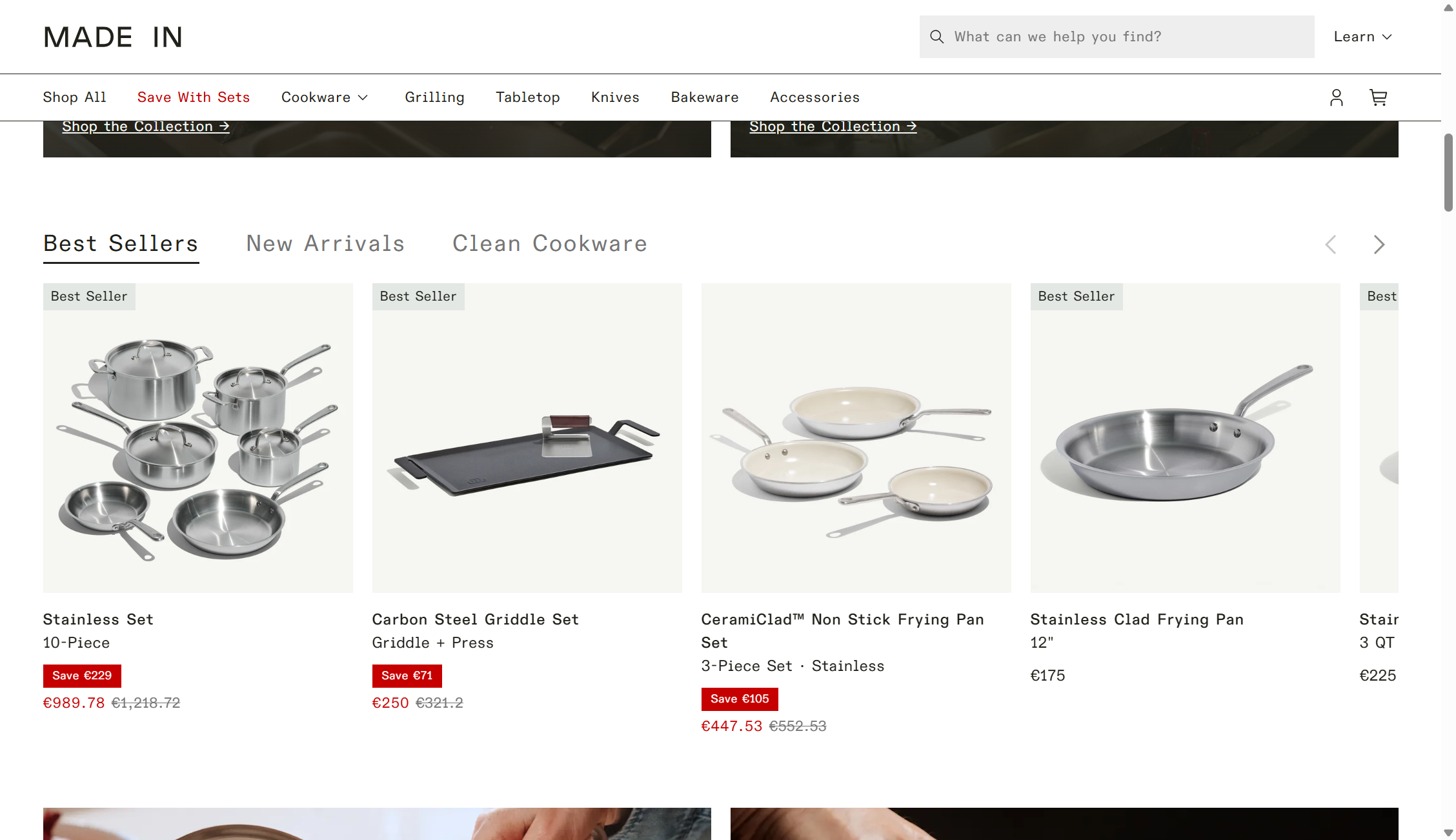
Think of this as a neon sign saying, “Hey, look here!” on the best-performing products. And, the result? Potential customers find what they need faster and are more confident about their choices. They also proceed through the checkout process without any issues.
Visual Attention and the F-Pattern
An article by Mailchimp reveals that when visitors land on a page, their eyes often scan in an F-pattern. This is because, first, they focus on the top left-hand panel. Then, they move horizontally and then downward.
Place your best-selling products in these “hot spots." These could be a full-width banner on your homepage or an editor's pick badge on a category page. This way, you can identify areas of peak engagement and increase click-through rates. This approach maximizes sales and improves customer attention.
Consider adding high-quality images and clear product titles in these F-pattern areas. These encourage buyers to scroll further and interact more with your content.
Social Proof and Scarcity
When you mark an item as “featured,” you’re tapping into the psychology of social proof and scarcity. When shoppers see this badge, they immediately realize that the item is “desirable.” And, when you place positive reviews and customer testimonials alongside featured products? You build more trust.
And, to create a sense of urgency is to add a countdown timer or “only X left” banners. This tactic elevates demand among customers.
Take Bianco Latte perfume, for example, a cult favorite known for its warm, gourmand scent. Online stores spotlight it with strategic placement and engaging scent sampling. This results in a noticeable increase in sales. To turn browsers into buyers, e-commerce store owners use smart tactics. These include bundling it with free items or highlighting customer reviews.
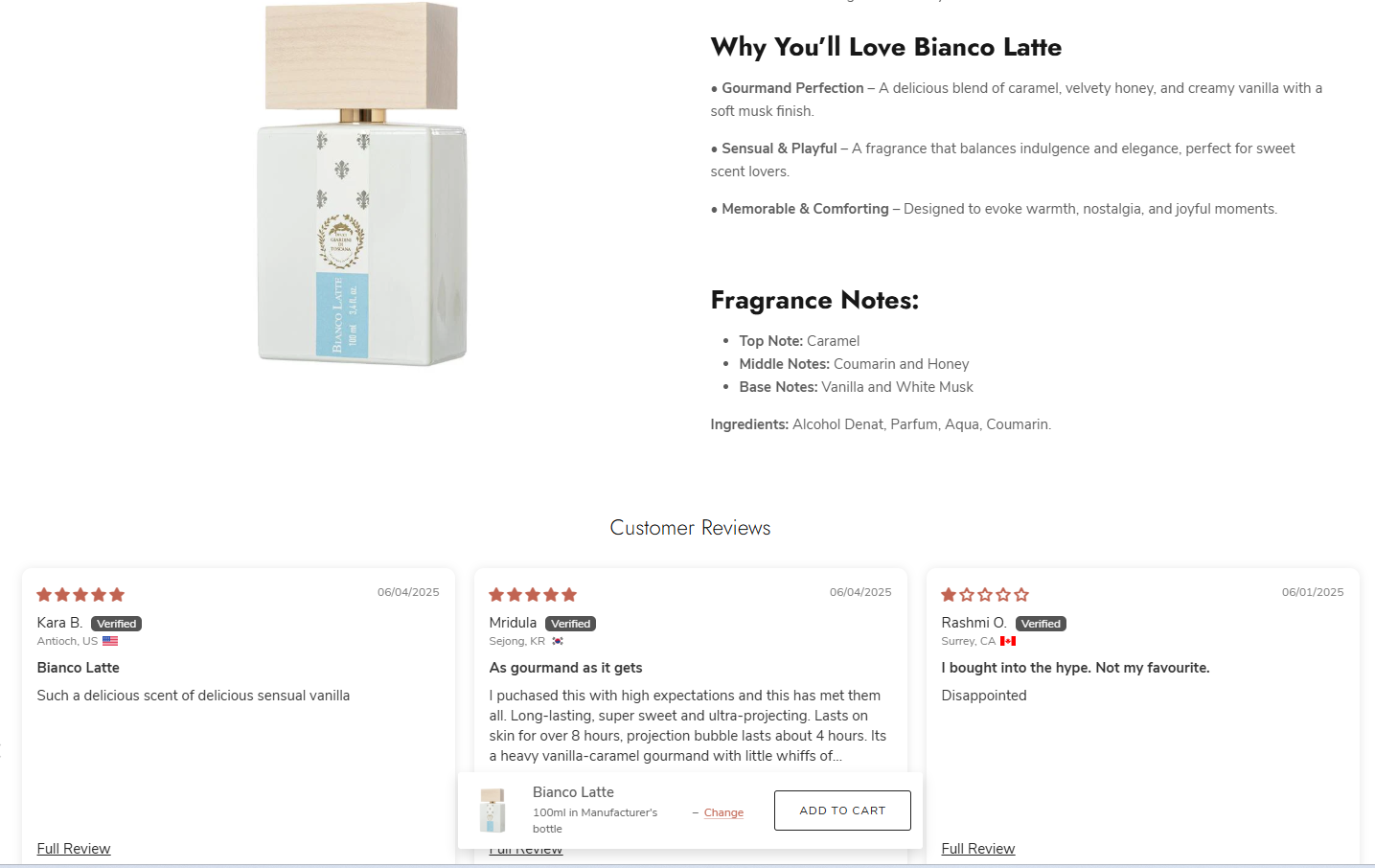
How to Choose Featured Products
To select the right product to highlight, we'll explore three approaches below. These will help you create a balance between data-driven selection and thematic relevance.
1. Make Data-Driven Selection
Let’s start with the data-driven selection.
a) Use Sales History and Analytics
Review your store’s analytics to identify the products that your customers love the most. Look at cart checkout and cart rate trends. These let you spot high-margin products that can increase profitability.
Analyzing customer feedback and behavior can be helpful. You can pinpoint offerings that resonate with your audience.
b) Use A/B Testing on Featured SKUs
Run A/B tests to compare different featured products. You can rotate collections or tweak button styling and design. This allows you to see which version drives the highest click-through rate and sales lift.
When testing, ensure that you include some personalization. It’s something that people love. Especially with personal products, such as gifts or souvenirs. Think of someone looking for items for their wedding. You could offer a customized wedding guest book. This could be a valuable product for someone planning their wedding shopping list.
2. Align With Seasonal and Promotional Themes
Seasonal items can boost your sales. It’s the time when shoppers narrow down their options, and some also look for last-minute gifts.
Incorporate seasonal relevance by featuring seasonal items. These could be care products for Mother’s Day or winter coats in November.
Use your theme editor to swap out category items. Sync it with upcoming holidays and events. This way, you'll tap into spikes in customer demand and build anticipation.
Create seasonal product bundles for gifting. These can include a featured product, a complementary item, and a gift box. Highlight it as a limited-time offer to create a sense of urgency and drive customer loyalty.
3. Balance New vs. Best-Seller Products
Promoting best-selling items can be exciting. But don’t forget about your new products.
Create a rotational schedule. Feature a fresh SKU every week. This encourages current customers to make repeated purchases at your online store.
Also, rotate featured products and update your banners. This is a great way for store visitors to see a new featured product every week.
Website-Level Tactics for Spotlighting Your Featured Product
There, you've selected your featured product. Now, you need to spotlight it across high-traffic touchpoints on your site. Here’s how to maximize visibility.
1. Use Homepage Hero Sections
For your homepage, use a full-width banner or a rotating carousel for your products. Use high-quality images and write an engaging product description and title.
Your call-to-action (CTA) buttons (like “Add to Cart”) should be bold and optimized for mobile users. In other words, shoppers should access your site on smart devices with ease.
Let’s take online liraglutide as an example. It's a sought-after product in the weight management and wellness space. Listing it isn’t enough. Other strategies can make all the difference, like highlighting it with:
- Educational content about how it works
- Clear benefit-driven messaging
- Customer success stories
Use other features like “As Seen On” badges, doctor-approved labels, or even an FAQ section. These help move curious browsers into confident buyers.
2. Collection and Category Pages
On category pages, use editor’s pick badges or sticky product ribbons. These allow you to draw attention to your featured collections. Add static or floating thumbnails with dropdown menu options for filtering.
Don’t forget to display customer ratings for social proof. Use different colors to distinguish specialty products from standard category items.
3. Product Page Callouts
When a visitor reaches a product page, use a sticky “featured product” callout bar at the top of the screen. Here, you should offer different purchasing options without forcing a scroll back up.
Use cross-sell widgets. These can suggest complementary items and create a bundle of product offers.
Use Email and On-Site Messaging to Drive Featured Product Traffic
Emails and on-site messaging amplify the reach of your featured collections. Personalized, well-timed campaigns can boost customer engagement metrics and click rates.
1. Targeted Newsletter Blasts
Segment your email list by:
- Customer segments
- Customer preferences
- Or past buying behavior
Send customer feedback reviews or promotional emails. These can promote specific featured items aligned with the recipient's interests. Tailor the subject line and preheader to highlight urgency. You could say something like “Only 24 Hours Left for 20% Off Featured Care Products!". This drives online sales.
2. Dynamic Product Blocks
On-site, use dynamic product blocks to auto-populate featured products. This is based on real-time customer behavior and demand.
These blocks add a personal touch to each user’s visit. They can adapt to show the best-selling items that resonate with the visitor’s interest.
3. Push Notifications and SMS Alerts
Set up push notifications or SMS campaigns to reach new audiences. This helps limit the frequency to avoid unsubscribes. You can also time messaging around peak engagement windows.
You could send out a message saying, “Hi Sarah, our featured products just got a 5-star rating! Check out the new water-resistant mascara in our summer line.”
Using Social Media and Ads for Featured Products
On social platforms, you can amplify your featured collections. Crafting the right mix of content and targeting ensures maximum reach and engagement.
1. Social Media Posts and Influencer Partnerships
Influencers can share user-generated content to promote your featured product on social media. These types of videos can boost conversions. They bring products to life, highlight use cases, fit, and style in a way that static images can’t.
Take StudioSuits, for example. They showcase featured products, such as tweed and custom double-breasted suits. They achieve this through separate videos, often featuring influencers.
These clips serve as social proof and demonstrate quality. They also help customers envision the products in real-life settings. This approach makes browsing to buying much more compelling.
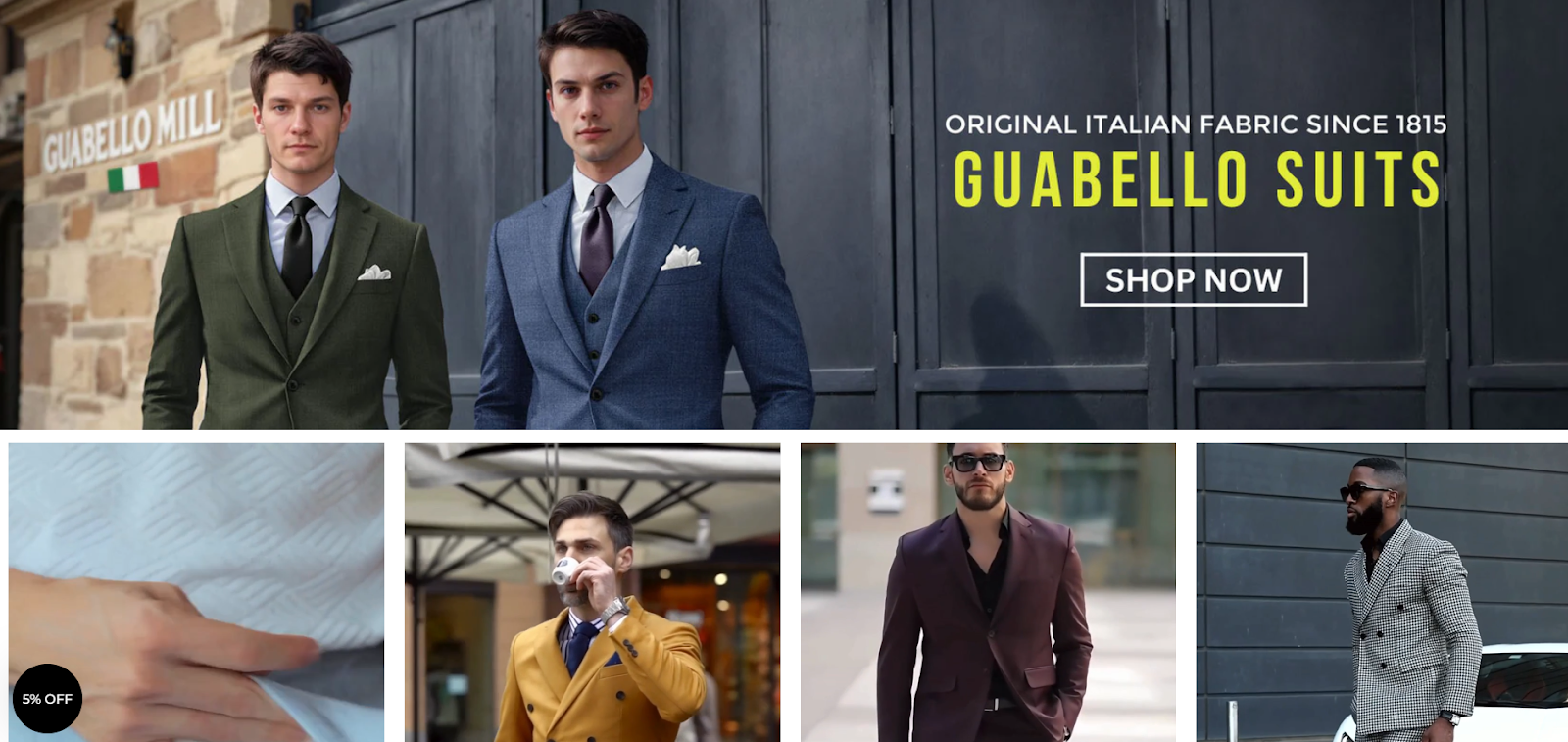
2. Dynamic Retargeting Ads
Dynamic retargeting ads help re-engage visitors who've stopped interacting with your content. For example, someone might have viewed denim jackets on your website. But, they didn't buy anything. On Facebook, they might get ads featuring the same or similar products with “As Seen On” badges.
3. Live Demos
Live video demonstrations let you showcase best-selling items in action. You can record these on TikTok or Instagram. Present new seasonal products, answer real-time questions, and share customer testimonials. This approach enhances customer experience. It also boosts engagement metrics, helping to drive a broader audience to your store.
How to Add Featured Products on Shopify
So, how do you actually highlight a featured product on your Shopify store? Good news—it’s easier than you think. Whether you’re using Shopify’s built-in features or a third-party app, here’s how to get it done.
Let’s walk through how to do this directly from your Shopify admin:
Step 1: Log in to your Shopify Admin
Head to your Shopify dashboard. This is where you control everything about your store.
Step 2: Navigate to Online Store > Themes
In the left-hand menu, go to Online Store, then click on Themes. This is where you’ll access the theme customization tools.
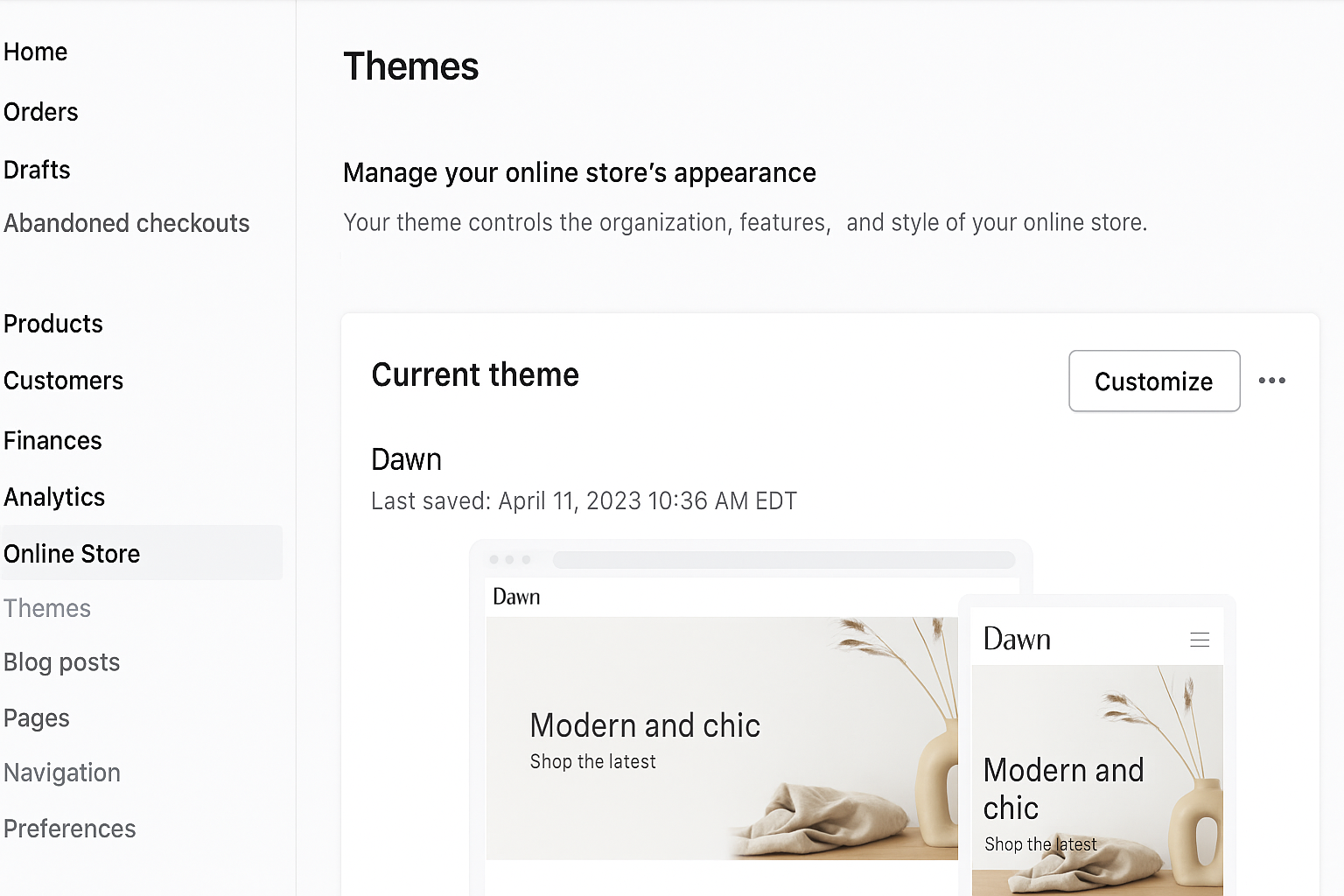
Step 3: Enter the Theme Editor
Click on the Customize button next to your current theme. This opens the visual editor for your storefront.
Step 4: Add a Featured Section
From the left sidebar inside the editor, click Add Section and choose either Featured Product or Featured Collection. You can now select specific items you want to spotlight from your product catalog.
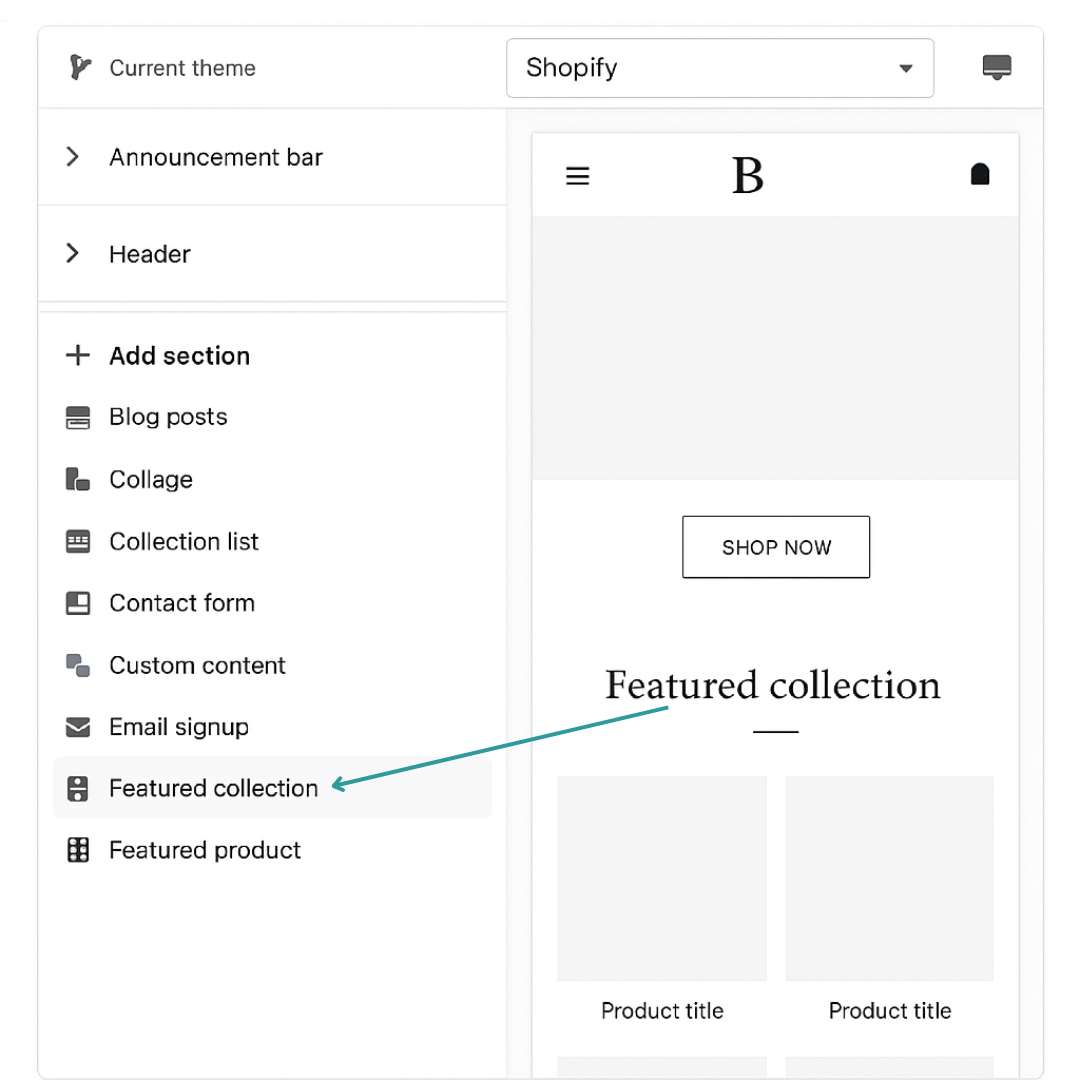
Step 5: Save and Publish
Once you’re happy with your selection, click Save in the top right corner. Your chosen products will now be prominently displayed on your store’s homepage or wherever you placed the section.
How to Measure and Optimize Your Featured Product Strategy
Data-driven decisions keep your featured product initiatives high-performing. When you track the right metrics, you can see what's working and what you need to improve. You can then refine your strategy to maintain good customer satisfaction.
1. Track Key Metrics
Monitor important metrics, like:
- Changes to average order value after rotating featured products
- Click-through rate
- Conversion lift
Analyze customer ratings and testimonials to see how others feel about your services. If a lot of people aren't satisfied with a particular product, consider swapping it.
2. Automate Rotation Rules for Featured Slots
Use automation rotation rules to refresh featured products around specific events. You can also schedule these on a weekly or monthly basis.
Automation removes manual intervention and maintains freshness, keeping your audience engaged. Combine this with periodic A/B testing. It ensures that your featured collections showcase brand-leading and best-performing products.
3. Analyzing Customer Segments and Preferences
Segment customers by:
- Loyalty tier
- Buying history
- Or browsing behavior
This helps you personalize which featured items they see.
For example, first-time shoppers might respond better to products at an introductory discount. But, repeat customers may be more receptive to seasonal items. Use customer engagement metrics to refine your segmentation. This is a great way to optimize your featured product content for each group.
Common Featured Product Pitfalls and How to Avoid Them
Challenges can occur. Even if you have a well-planned strategy for your best-selling items. But recognizing and addressing common errors is key here. It ensures that you value a positive customer experience and loyalty.
1. Over-Featuring and Banner Blindness
Imagine every other banner, block, or ribbon screams “featured." Your audience can develop banner blindness. You’ll notice a decline in customer attention and satisfaction. To prevent this, limit display featured spots to prime locations only. These can include your homepage hero section, select collection pages, and product pages. Rotate featured collections on a schedule to re-engage attention.
2. Misaligned Product Highlights
Choose your featured products carefully. Highlighting an irrelevant item can frustrate users, leading to customer disappointment. Ensure your selections align with the broader user journey, from homepage to checkout.
3. Technical and UX Barriers
Semrush states that a good bounce rate is 40% or lower. If it reaches the 60% mark, your site may encounter issues that can have a negative impact on user experience. Examples include low loading times and a messy mobile layout.
In fact, research shows that the slower a web page is, the higher bounce rate you’re likely to experience:
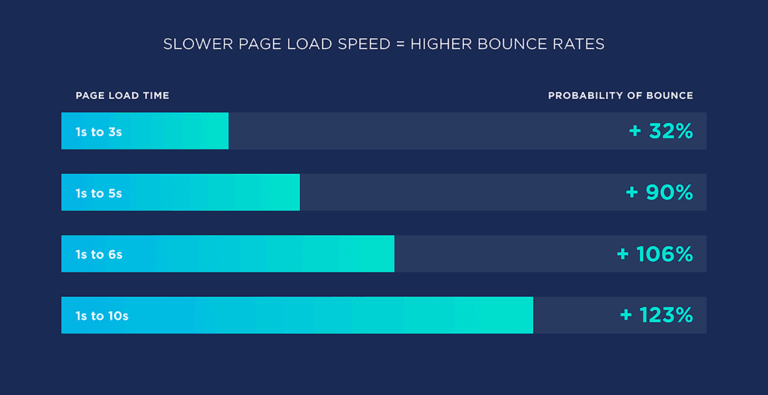
To optimize your site, you need to perform regular site speed tests. Optimize your product images. So Iíf image files are large, make sure to compress them. Check that checkout buttons work well on mobile devices. Adjust the color and description font size for readability.
Create Your Featured Product Strategy Now
To create an effective featured product strategy, you need to consider various factors. These include data-driven product selection, seasonal trends, and multi-channel execution. By optimizing product placement, you guide your target audience from browsed to bought.
Remember to track key metrics, automate rotations, and avoid common pitfalls. This helps keep your customer base engaged and satisfied.
Looking for more information for your e-commerce store? Visit Reconvert’s blog to learn more.


.png)


